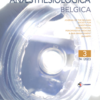Can the OSA patient be managed within an ERAS protocol? A narrative review
Obstructive sleep apnea, ERAS, Perioperative management
Published online: Sep 20 2023
Abstract
Obstructive sleep apnea (OSA) is the most common sleep-related breathing disorder among surgical patients and is associated with an increased risk of perioperative cardiopulmonary complications leading to increased health expenses. Therefore, preoperative OSA screening should be instituted to inform patients of their increased perioperative risk and measures can be taken in to decrease this risk. Meanwhile ERAS (Enhanced recovery after surgery) guidelines are becoming standard of care and being widely implemented. The purpose of these recovery programs is to standardize medical care, enhance outcomes and decrease health care expenses using evidence-based protocols. According to the current evidence it is unclear if OSA patients could benefit from these protocols. The first part of this narrative review states the current evidence on OSA definition, classification, pathophysiology and risk factors, postoperative complications, endotypes and their relevance for the anesthesiologist. The second part investigated the feasibility of ERAS measures within the OSA-population. Preoperatively there are many parallels to be drawn between the ERAS measures and Society of Anesthesia and Sleep Medicine (SASM) guidelines on OSA management: Risk stratification by OSA-screening, information counselling on the increased perioperative risk and optimization of preoperative health conditions by initiation of CPAP-therapy. Perioperatively the use short acting anesthetics allows for both early mobilization and avoid postoperative respiratory compromise by sustained drug effect. ERAS measures to maintain the patient in the zone of normovolaemia are advantageous for OSA patients as excessive fluid administration can worsen OSA. The use of multimodal analgesia sparing opioids might be the most important element beneficial for OSA patients they are more prone to develop opioid induced respiratory depression (OIRD). As OSA patients are at risk for venous thromboembolism appropriate thromboprophylaxis should be applied. Postoperatively OSA patients should be closely monitored in the prevention of OIRD. In conclusion many ERAS measures seem to be applicable or of benefit for OSA patients. However, large prospective randomized controlled trials are needed to evaluate if these patients can be managed within an ERAS protocol.
